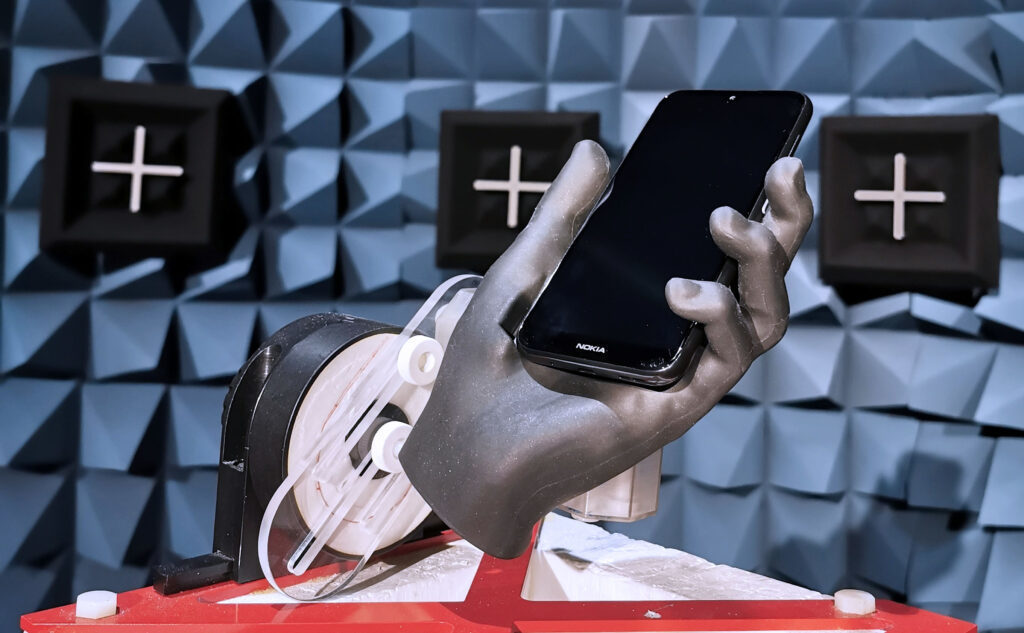Cell phone waves have changed dramatically the way we communicate. It is said that the number of cell phones in the world is greater than the number of people. But do you actually know how your cell phone is connected to the internet? Also, after reading this article you will know what the relationship between your cell phone and wireless device over-the-air antenna testing is.
- Cell phone waves – What are they actually?
- How does a phone work?
- Structure of a cell phone
- Base station controlling your wireless interactions
- How cell phone waves are measured?
- Why is it so important to test cell phone waves?
- References
Cell phone waves – What are they actually?
Cell phone waves have changed everything, but at the same time, they are invisible and undetectable to the human eye. Although this concept is rather complicated, we will demonstrate to you the invisible radio waves of your device. In this article, we will use a cell phone as an example, but all wireless devices work according to the same principle. As all wireless technology uses radio waves to communicate, when talking about the cell phone waves, we refer to the radio waves used to transmit information to and out of a cell phone.
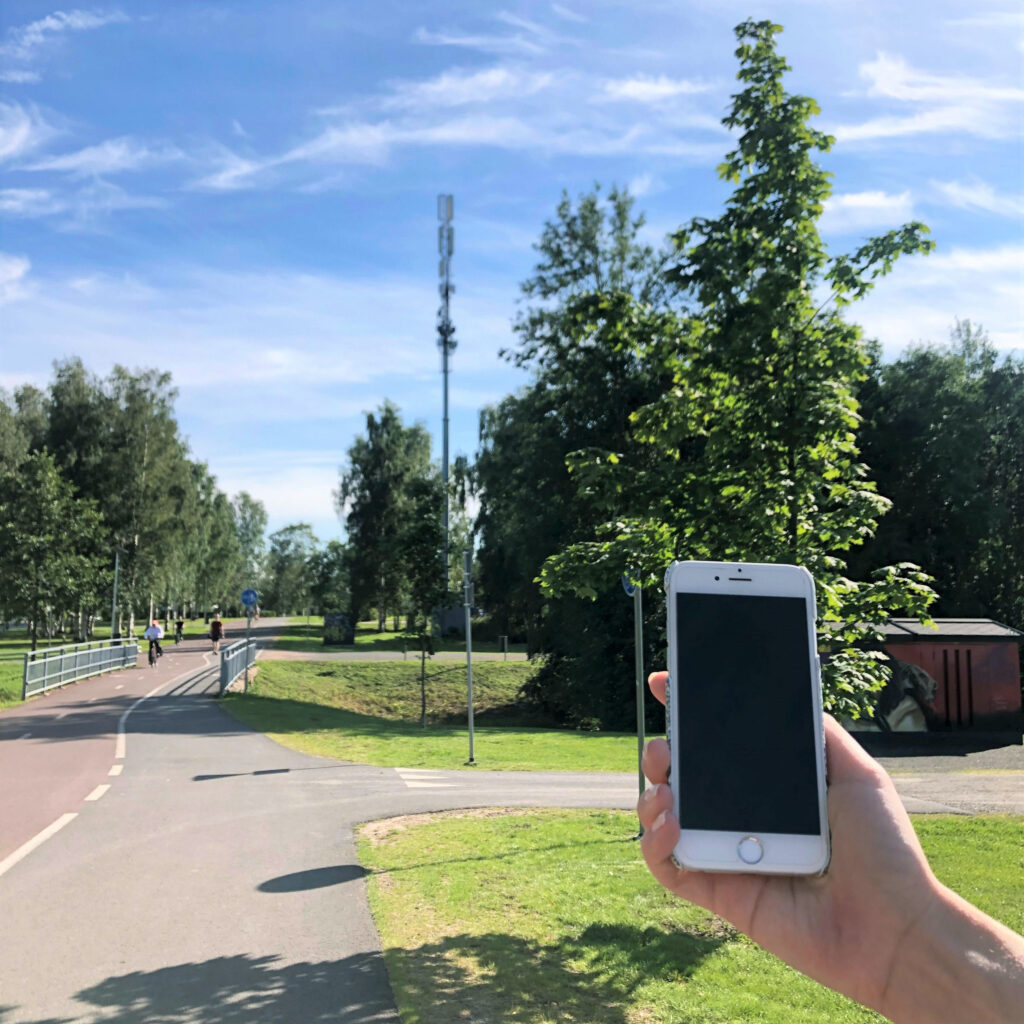
The radio networks are all around us. These networks are operated by telecommunication operators. When a cell phone is turned on, the phone starts to look for frequencies from the radio network around it. When the phone and the SIM card are accepted by the operator’s radio network, the phone is ready to be used to transmit and receive calls and messages. You can be accepted to your home network but when you are traveling outside the geographical coverage area of the home network, you can visit another network by using a roaming agreement.
The base station needs to be able to hear the cell phone radio waves well and the other way around. For this to happen the technology used by the base station and a phone need to be the same. If a base station supports 5G technology and phone only supports 4G technology, the technology finally used in communication is 4G because the lower technology is always chosen. If your friend’s phone supports 3G technology, 3G is chosen for communication.
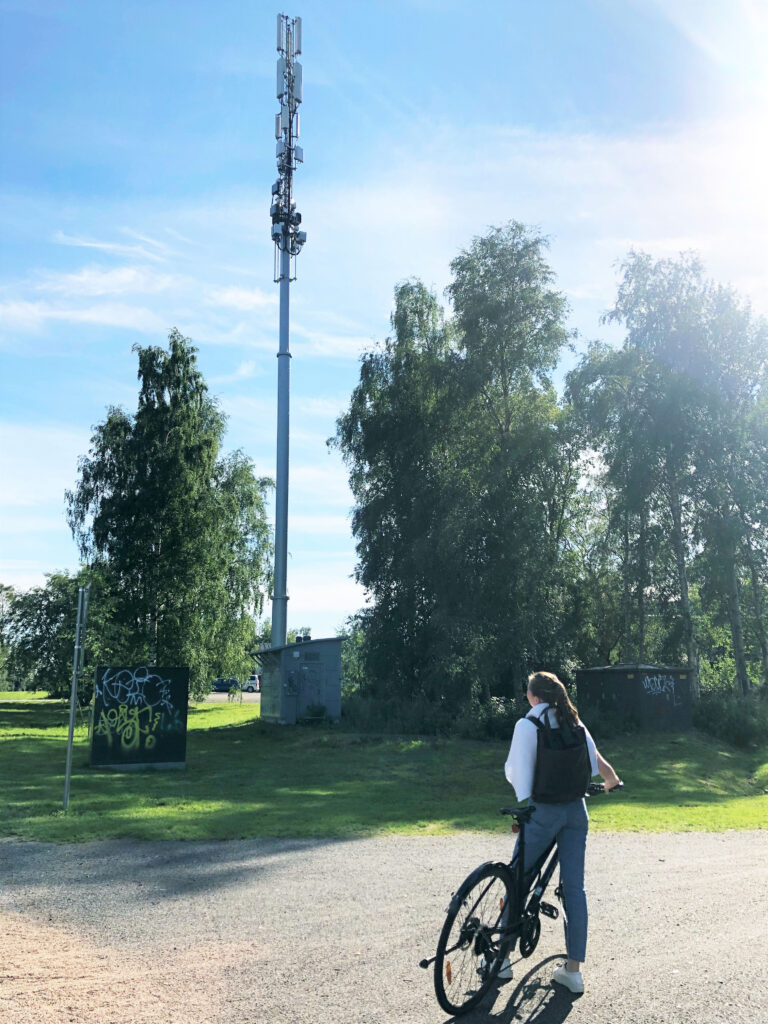
How does a phone work?
When using a cell phone, radio frequency radiation is emitted. This is radiation is non-ionizing radiation. Phones, like any other wireless products, include antennas. Antenna in a phone launches radio waves into space and these waves are picked up by a receiver in the cell phone tower. Antennas in cell phones radiate and capture the radio signal which is used to communicate.
In addition to a good connection between a phone and a base station antenna, base stations need to be able to communicate smoothly with each other. They need to inform each other about which base station has the control responsibility. In right terms, they need to communicate about handover, the process of transferring an ongoing data, the call session.
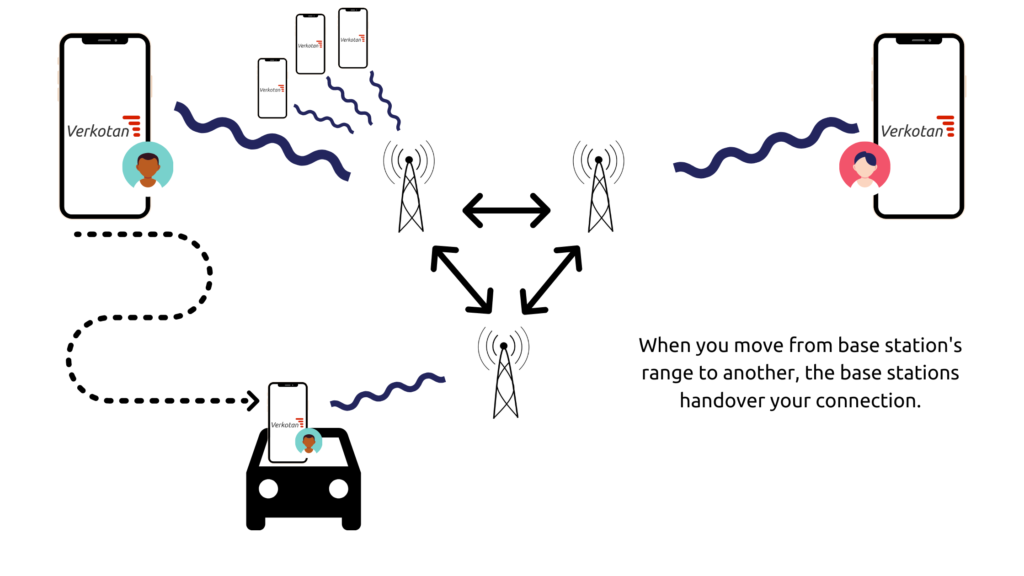
What happens during a phone call?
Cell phone is made for two-way communication. When you speak with your friend over a call, next things happen:
1. Turning sound waves into digital data
A microphone in a phone converts the voice into strings of numbers. The enormous number of bits are packaged into a zip file. These numbers are then transformed into radio frequency waves and packed onto a sine wave.
2. Transmitting the digital data to a base station
This digital data is then transmitted along various lines as follows: Once the sound has been placed on the sine wave, this wave transmits the message to the phone’s antenna which sends the signal out. The radio wave moves through the air, at the speed of light, until it reaches the nearest base station.
3. Calls are routed to their destination
Finally, digital data reaches the person you are speaking to: The receiving antenna in another phone then receives the radio waves and decodes the message from the sine wave it receives. This way your friend’s phone converts the signal into audio with the receiver.
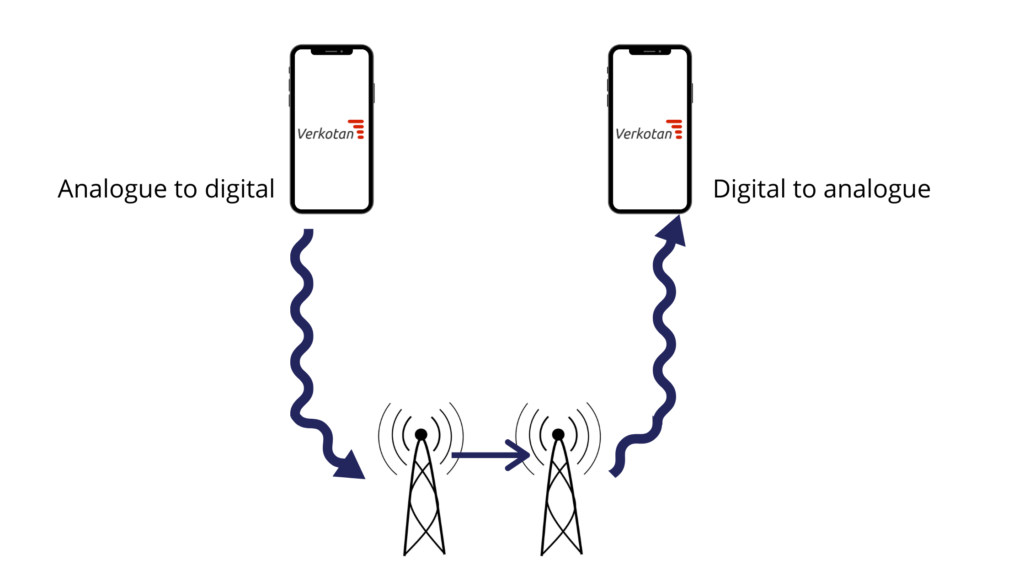
Structure of a cell phone
A cell phone is a radio transmitter and like other wireless products, it includes antennas. Antennas’ main purpose is to send radio waves into space. To make the call possible, your cell phone needs to include two things:
- Transmitter which sends waves
- Receiver which accepts waves
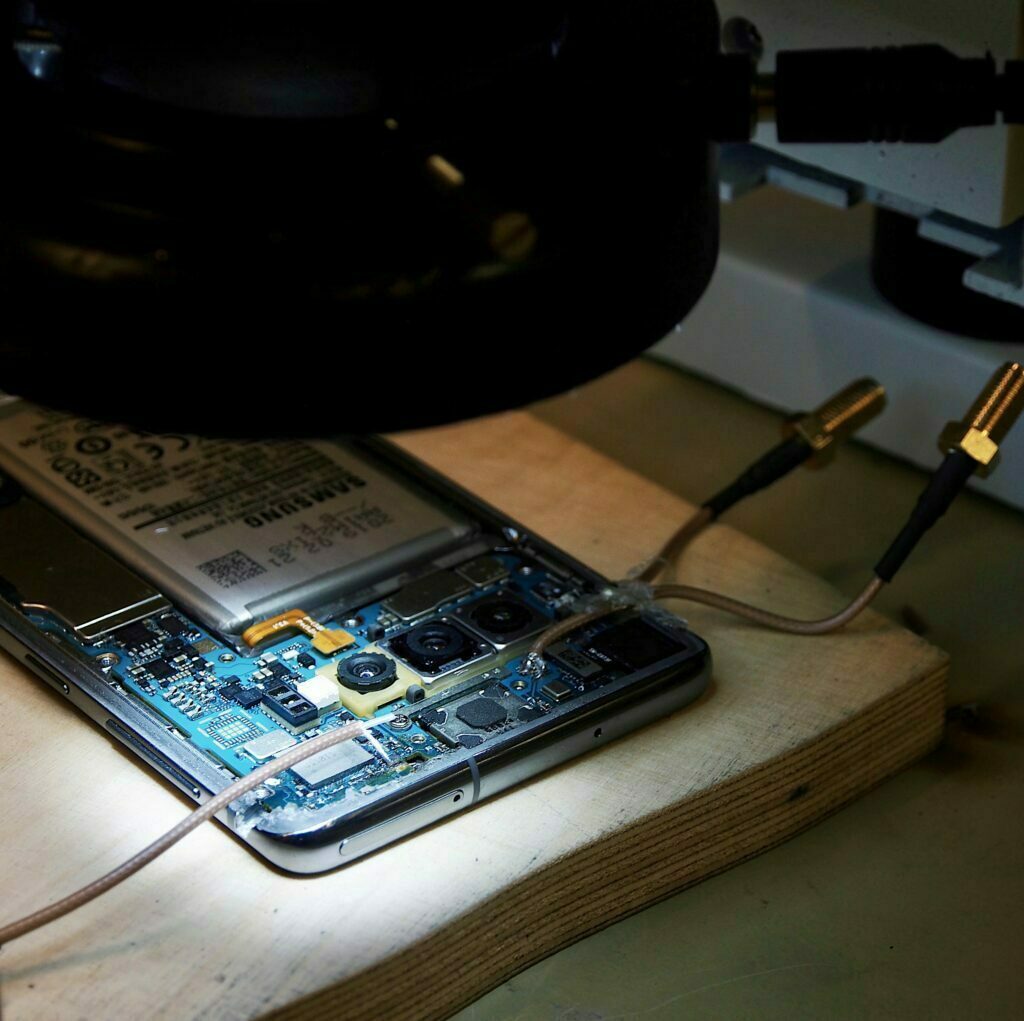
Most of the modern cell phones have multiple transmitting or receiving antennas. This can currently be as many as several dozens. A cell phone can use the transmitter antenna and receiver antenna at the same time. It can also understand hundreds of different frequencies and switch between these frequencies.
The number of antennas in a cell phone depends on many things:
- Frequencies that the phone supports
The antenna is designed to transmit and receive specific frequencies of radio waves. The frequencies are different in Europe, Asia, and the USA. When a phone is meant to be sold in global markets, it needs to support all frequencies, and inevitably the number of antennas increase.
- Phone design
The design of a cell phone depends on a manufacturer. A phone can have fewer cellular antennas that cover wide range of frequencies or more antennas that cover narrower range.
- Cellular technology used (e.g. 2G, 3G, 4G, 5G)
When the phone supports newer technology, the number of antennas increase. A phone that supports 5G technology has at least one additional antenna compared to a phone that supports 4G technology. As the antenna size decreases, it is possible to add more antennas to a device, although the size of the phone increases due to screen requirements. Likewise, when the amount of data transmitted increases, the amount of antennas naturally needs to increase.
More about antennas
Antennas inside a cell phone are very compact in these days, the length of an antenna is only two millimetres. A cell phone contains at least one radio antenna, called the primary cellular antenna. The primary cellular antenna is extremely important because it is used to communicate. Typically, this is the only cellular antenna that transmits. Therefore, it has many specifications and requirements to meet, for example, SAR requirements. Transmitting antennas are usually placed on the bottom of the phone. This is because the human head decreases the transmission and as the antenna is placed further, less radiation is absorbed by the user’s head.
As you know, your phone also has other attributes in addition to transmitting and receiving phone calls. For these purposes your phone also includes separate antennas for Wi-Fi, Bluetooth, NFC (near field communication) and GPS (global positioning system). What antennas are included in your phone depends on the manufacturer.
In these days’ antennas are added to many different wireless devices and platforms. You can find antennas in watches, rings, smart houses and even on clothes. Therefore, the number of antennas will increase in the world and the importance of antenna testing is growing with it.
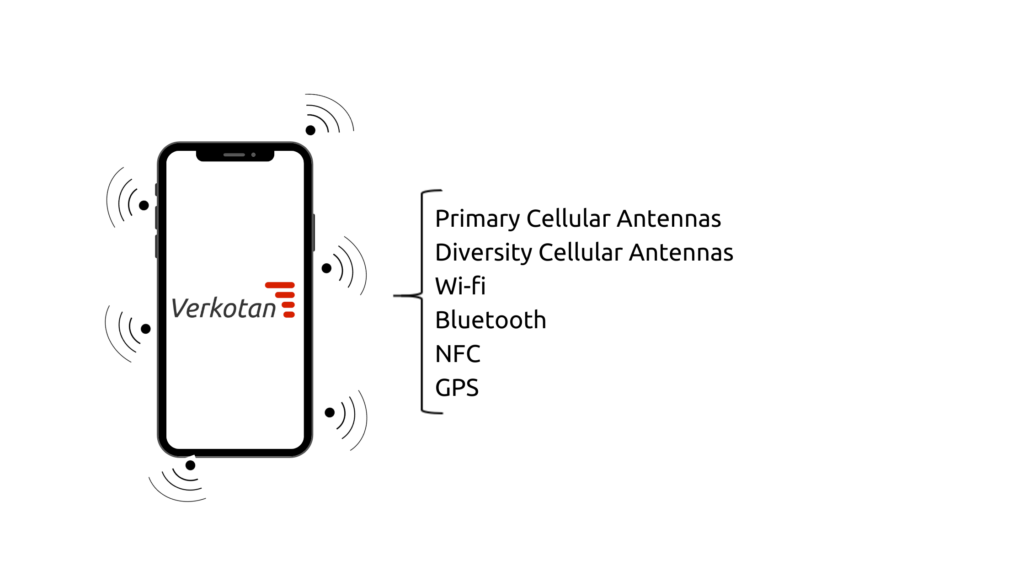
Base station and wireless interactions
Did you know that the power transmitted by the base station is always the same, but the power transmitted by your phone varies.
Imagine the following situation: You are standing on the top of a building and there is a person in the ground below you. When this person screams to you, you can hear well what he has to say. But suddenly, more people appear, and they all start screaming. When there are 50 people trying to scream to you at the same time, it becomes extremely difficult to figure out what each person is trying to say. In order to hear what one person says, you need to tell another person to be quieter.
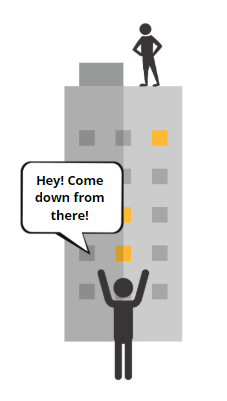

This is what the base station also does. It tells your cell phone to increase or decrease the power depending on how many people are around you. In 3G phones, for example, the base station adjusts your phone’s power around 1500 times per second. Do you remember the last time you were at a festival with a lot of people? You probably had difficulties getting your messages or calls through. This happened because the base station near you was overloaded due to a sudden population increase in that area.
New technology – better reception?
New wireless technology gives new opportunities. The latest technology called MIMO (multiple input multiple output) technology uses multiple transmitters and receivers, enabling moving more data, faster and to a greater area. MIMO antenna sends a separate beam to each user, making the signal very precise. This technology is used both in 5G and 4G antennas in the base stations and on your 5G and 4G devices. MIMO solves many wireless technology problems we face today.
When a phone is close to the base station and a signal leaves a base station to the receiving phone, MIMO technology is used. Data throughput is high when using MIMO technology and this means that a larger amount of data can be transferred more efficiently. As the distance increases, the power of the transmission signal decreases and as the amount of noise (signal to noise ratio) increases enough, MIMO can no longer be used.
What about SISO?
When this limit is reached, the base station needs to switch to simpler SISO technology that has better, stronger signal. SISO technology is therefore used when phone is further from the base station. The conditions required by SISO are less demanding but when switching to SISO, the data throughput decreases significantly. This is because now there is only one transmitting and receiving antenna as SISO refers to single input single output.
Newer generations of base stations utilize more powerful and efficient antennas, meaning they can transmit a signal further than previous models, this is demonstrated by the red dotted line in the picture below. The achieved marginal utility means that the same coverage area is reached with fewer base stations, in which case the base stations do not need to be placed as densely. Base stations can also be placed close to each other when the transmission power does not need to be as high.
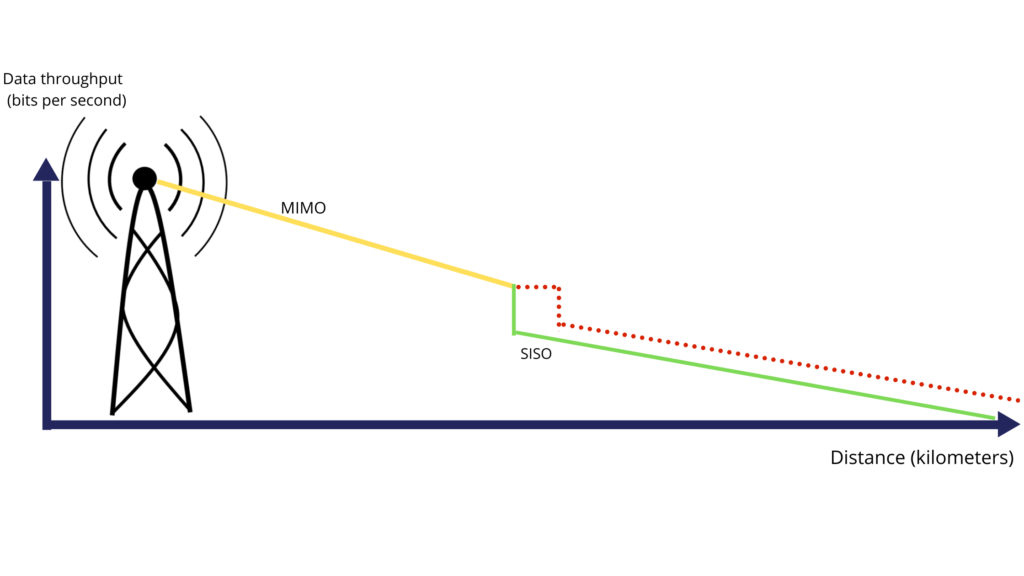
How cell phone waves are measured?
Cell phone waves are measured in terms of frequency. This refers to the number of times a wave oscillates up and down per second. Sine wave is a continuous wave that oscillates smoothly and periodically, as presented in the picture below. These sine waves are used by all radios to transmit information. Each wave has own frequency that separates them from each other. When the optimal power and performance for the phone are designed, the safety of radiation transmitted needs to be assured. In US and Canada, the phone is allowed to radiate with the power of 1.6 watts and in Europe 2 watts per kilogram.

Antenna used in a device considerably impacts how great is the power transmitted by a phone and how far does the signal carry. When the distance grows the power slowly fades into noise. If the power in a phone is low, it must be close to the base station in order to work. The better the antenna, greater the power, the further the signal carries. Also, the place and environmental factors where the device are used affect the antenna performance.
Measuring the power transmitted by antennas, in other words, the antenna performance is crucial. Human hand and head affect the way the phone works and depending on the phone and its design, they can tolerate user effect differently. This user effect is demonstrated by phantom hand and a head filled with homogeneous simulating liquid that simulates human tissue electronically. The hand phantom is solid but has the same electrical conductivity as a human hand. Phantoms are developed so real humans are not needed to test the radiation in a test chamber.
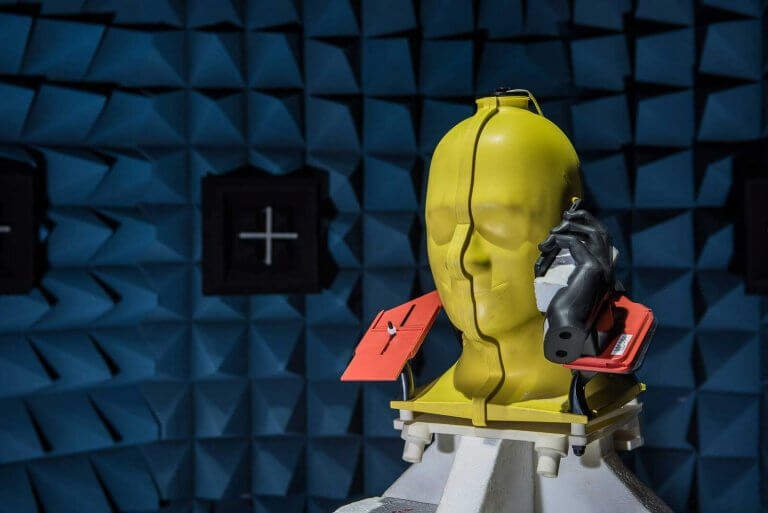
Antenna radiation pattern of a cell phone
The radiation pattern of an antenna demonstrates how the antenna radiates radio frequency energy. As mentioned, a human hand and head can affect drastically to the performance of the antennas. This can be clearly seen from the antenna patterns of a mobile phone.
Next pictures show how the radiation pattern of a mobile phone changes, when measuring the phone in a free space compared to measuring the phone with a hand and a head. To demonstrate the difference more clearly we have produced 2D and 3D antenna patterns of cell phone radiation pattern.
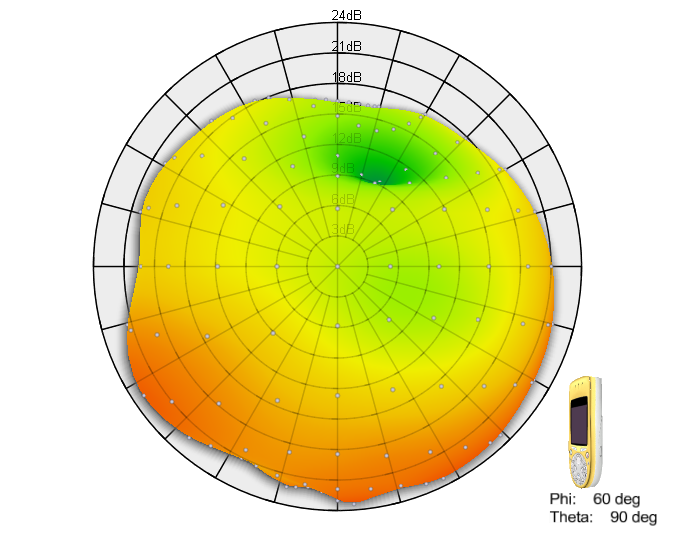
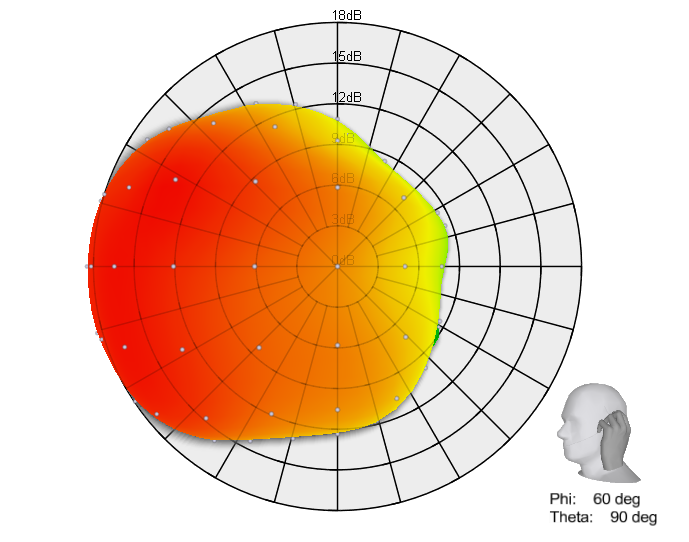
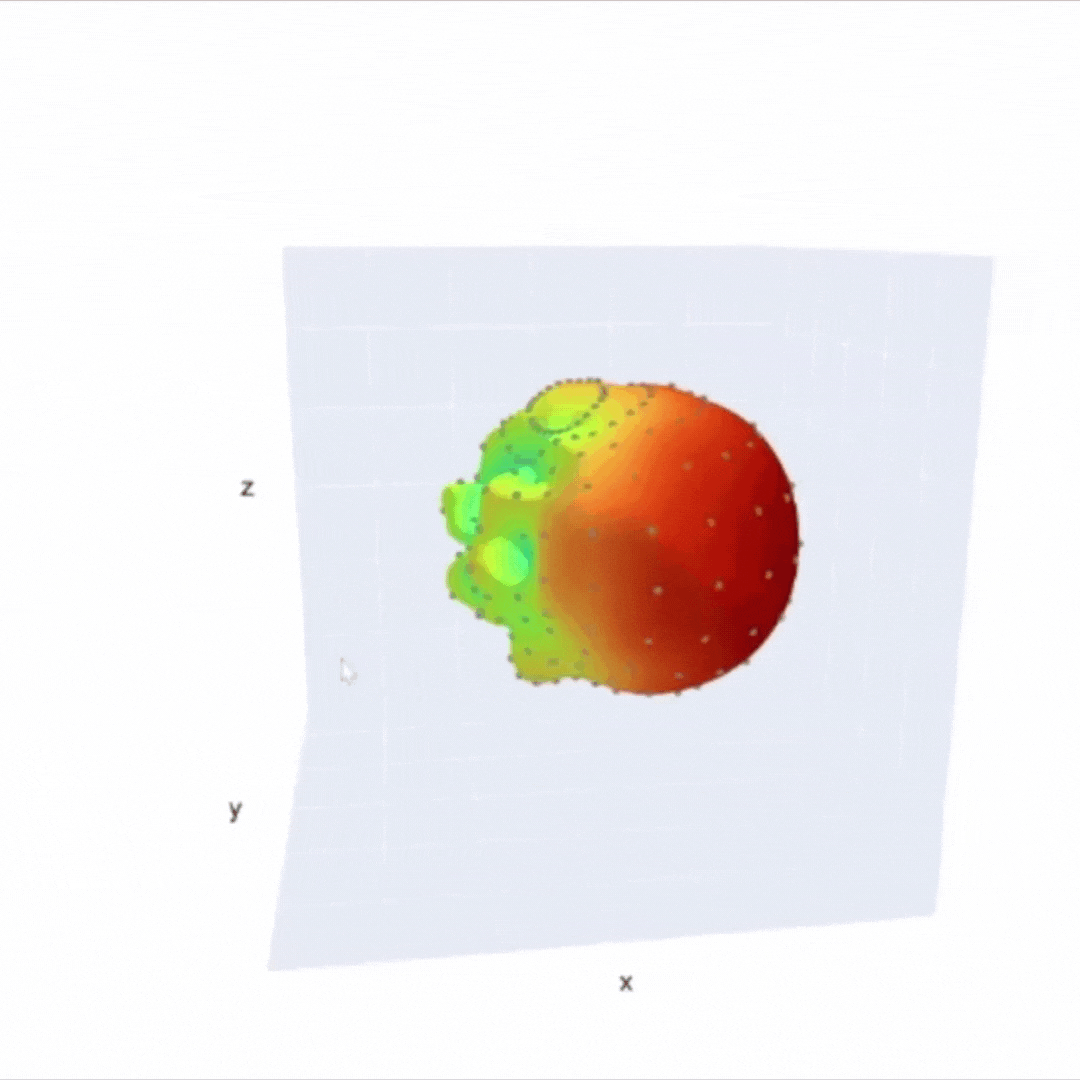
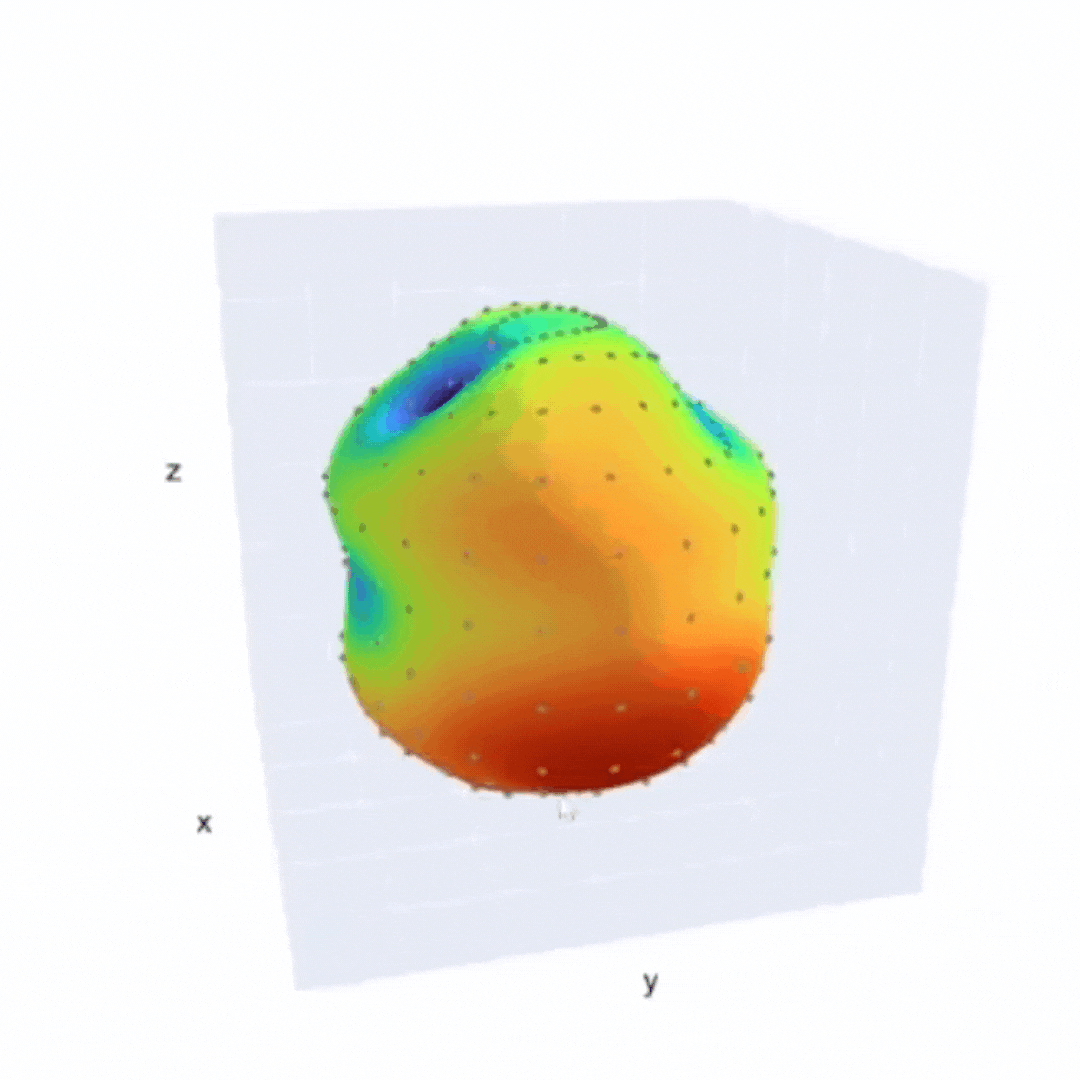
The colour red is indicating that the antenna is transmitting power to that direction powerfully. Green indicates weaker transmission power. Images above show that the transmission power of antennas is often most powerful in the bottom of the phones. This is because the transmitting antennas are placed in the bottom of the phones, so that less radiation would be absorbed by the user’s head. Another reason for the placement is to minimize the effect of human head and hand on the transmission power.
Verkotan laboratories can produce accurate 3D antenna radiation patterns of your device. Measurements for mobile devices can be done in Free Space, but we can also use hand, head and body phantoms or even real people to see how your product performs in realistic, different use cases. Verkotan can tailor the test environment to suit to your specific needs! We also offer 3D antenna pattern testing for base station antennas.
Why is it so important to test cell phone waves?
The number of people who connect their wireless devices to wireless networks have increased significantly during the last years. Users expect their devices to work perfectly everywhere and carriers need to answer these expectations with better reliability. Mobile device OTA (over-the-air) testing is used to evaluate the performance and reliability of any wireless product, including your phone and base station.
Why wireless device antenna testing?
- To help manufacturers to meet different requirements
Many network operators ask cell phone manufacturers perform wireless device OTA testing to see if phone’s performance works well enough. OTA antenna testing is also required by CTIA and 3GPP.
- To evaluate cell phone’s performance in different environments
Antenna testing can be done in all stages during product development cycle. An early stage OTA testing allows manufacturer to control and modify product more easily which saves money in the R&D phase of product development.
- To make better user experience
Over-the-air antenna testing can help product development teams identify the issues and increase end-user experience. Many things for example environment or human tissue can affect how a cell phone works. Also, inside your cell phone, there are several other components besides antennas. Any metallic components can interact with the transmission antennas and disturb the performance.
When you use your phone, for example, make a call, your phone emits radiation. It makes calling with a cell phone technically possible. At the same time, your phone is designed in a way that is safe to use. This is where SAR (specific absorption rate) and OTA (over-the-air) testing play a very important role. SAR testing is basically the opposite of OTA testing and makes sure your device is safe to use. You can read more about mobile phone radiation and SAR testing from our previous article.
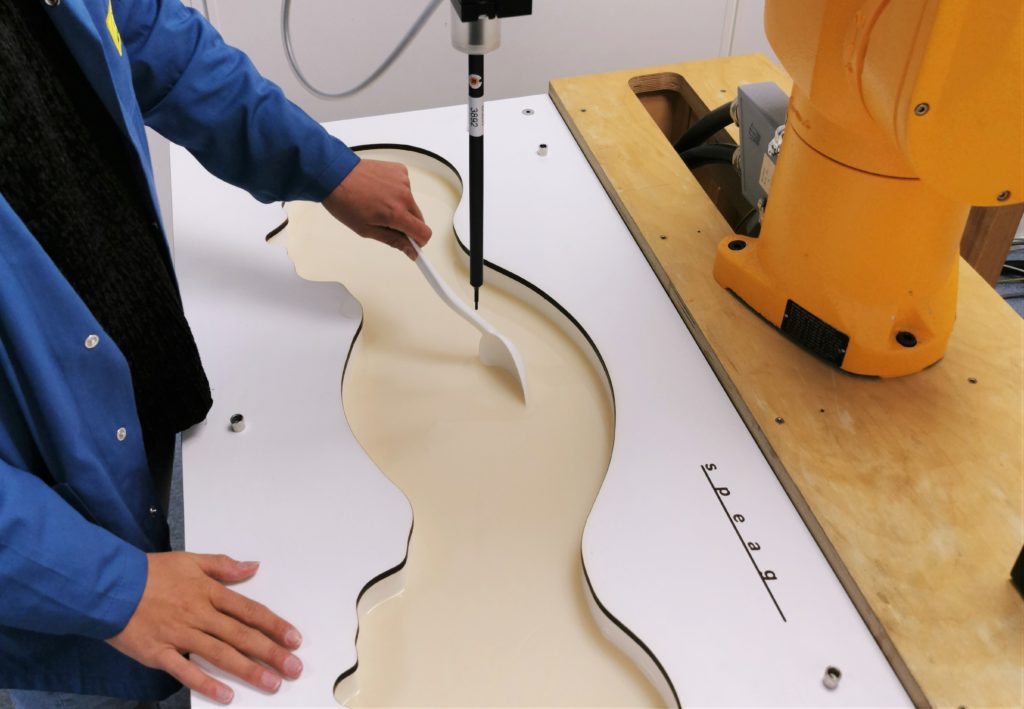
From 1G to 5G
New technologies, new devices, and new antennas enable better performance of base stations and other wireless devices. When the number of cell phones has increased, also wireless connections have developed. In 40 years, we have moved from 1G to 5G. 5G – as the name implies, is the 5th generation of mobile networks. It brings us many advantages like higher speed, more responsive, and the ability to connect more devices at once. At the same time, new technologies increase the importance of wireless device OTA testing.
Follow our social media channels to keep up with the latest news in the world of wireless technology.
References
https://electronics.howstuffworks.com/cell-phone-radiation1.htm
https://electronics.howstuffworks.com/radio4.htm
https://pongcase.com/blog/cell-phones-work/
https://en.wikipedia.org/wiki/Cellular_network#Movement_from_cell_to_cell_and_handing_over
